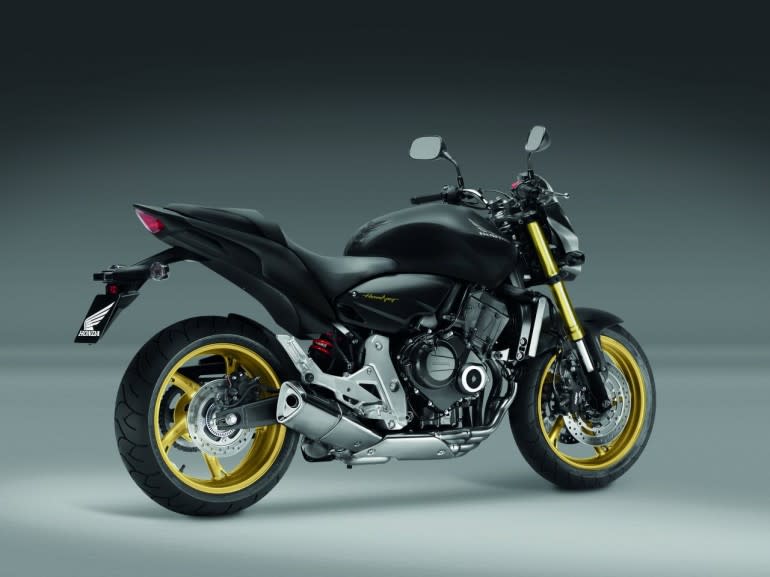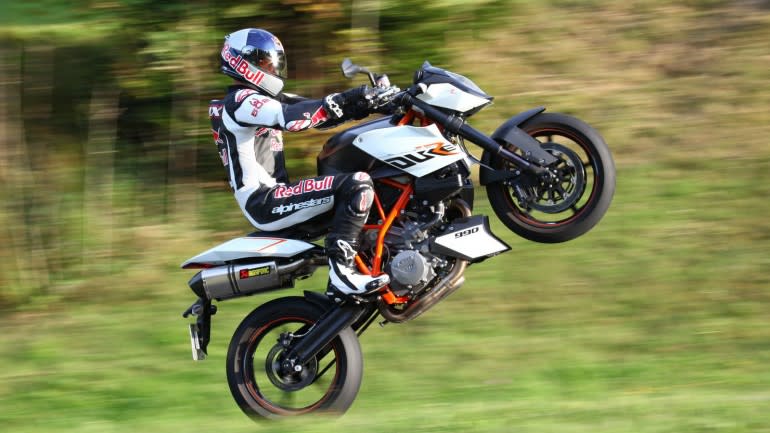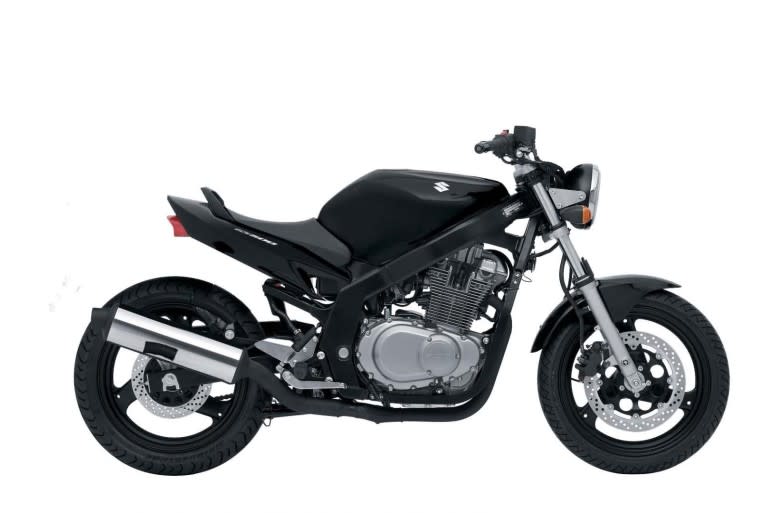A Short History of the Naked Bike
Over the past decade, it seems that every manufacturer has become obligated to create a naked version of every sportbike they put out, but, contrary to the inexperienced eye - and motorcycle forums around the web - a naked bike is more than just a stripped sportbike.
READ MORE: 7 Places a Motorcyclist Should Avoid In Traffic | RideApart
So, what is it about a sportbike with dirtbike-like bars and no fairings that has made so many fans so quickly? To clear up any confusion, we present a short history of the naked bike.

Early History
Unlike most types of motorcycles, the naked bike has roots that spring forth from the garages of European sportbikes. In its early years of the late 80s and early-90s, the naked bike, first nicknamed ‘Streetfighter’ was the answer to an empty bank account and a crashed sportbike. Think rat bikes on steroids built somewhere in Europe and there you have it...
Rather than replace a set of $600 fairings and $120 clip-ons, these early Euro pioneers would remove all the unnecessary - and heavy - parts, rig up a set of $18 Fly Racing bars and keep on riding. Naked bikes look the way they do because these early versions were designed to show off their battle scars (and it is an obvious explanation of how the Streetfighter got its name too).

As the Streetfighter became more popular, manufacturers found gold hidden beneath the aerodynamic cowlings on their brand new race-replica sportbikes. The look and feel of these naked bikes came from the idea that most sportbikes spend their life to the right of a double-yellow line - not on a flawlessly paved racetrack - and they desperately needed to evolve. So, with a lot of trial, error and a little bit of money, the naked bike evolved, changing the mold of modern motorcycles in the process.
Adolescence
Some argue that the first manufacturer’s adoption of the naked bike was with the 1993 release of the Ducati Monster. Ducati, as we all know is a company that bears the reputation as “the Ferrari of motorcycles” and was the perfect brand to spearhead the social acceptance of this new genre.
With a design by Miguel Angel Galluzzi, the Moster was revolutionary- Galluzzi lifted the Monster’s skirt to reveal Fabio Taglioni’s trellis frame, thereby proving that function begets form. The Monster’s passionate design smashed the stigma that anything with a Z-rated tire was a plastic piece of junk made for punk kids.
Rather than starting from scratch, as Ducati had done with the Monster, Honda saw the sales numbers of the Monster and decided to join the party too. So, in 1998, Honda de-tuned the CBR600F3, ripped off its clothes and unveiled the CB600F, also known as the Hornet.
A salvo was launched and an industry was changed. Where Ducati showed the world what a manufacturer could do with a properly engineered naked bike, Honda showed the manufacturers just how easily it could be done. After the release of the Honda Hornet, other OEMs followed suit and slew of fast and inexpensive naked bikes coming to market and reads like a who's who of two wheeled awesomeness - Yamaha’s FZ, Suzuki’s SV, and Kawasaki’s Z are just a few of the many that changed the powersports landscape.

Naked Bike Development
Over the years, corporate competition and technology improvements turned these bare-bone road racers into what they are today.
While the transmissions on sportbikes are mostly tuned for a race track - first gear gets you up to a racing speed and the other five gears give you options for grinding through smooth, open curve. That's all fine and dandy, but tight turns on a mountain road and the complex traffic patterns of a city require the engine’s torque to pay a little more attention to lower speeds. To answer this, the manufacturers have played a lot with ratios.
On a naked bike like the Triumph Speed Triple, you’ll find its powerful 1050cc engine pinging the rev-limiter at 60mph in first gear—unlike the CBR 1000 RR’s first gear, which climbs well above 80mph—and the rest of the gears of the Triumph are divided somewhat equally between 60 and 150mph.
While naked bikes all have different top speeds, 150mph seems to be the most common, as they lack the extra sprocket teeth to have any bigger of a bite than that. The naked bike transmission setup is perfect for whenever you see a dirty yellow suggested speed sign warning you that anything over 25mph is unsafe.
You can choose first gear, enter at 45mph, get a little squirrely around the apex and level out, gradually exposing the full potential of your motor to the acute radius you just annihilated. Also—sixth gear power!!! Three car lengths can be gained in traffic in a matter of seconds all without downshifting.
Another solution to the public-road problem was to redesign the power curve for most naked bikes. A modified set of camshafts take the five figure rpm power down to more conservative levels.

 Yahoo Autos
Yahoo Autos 
